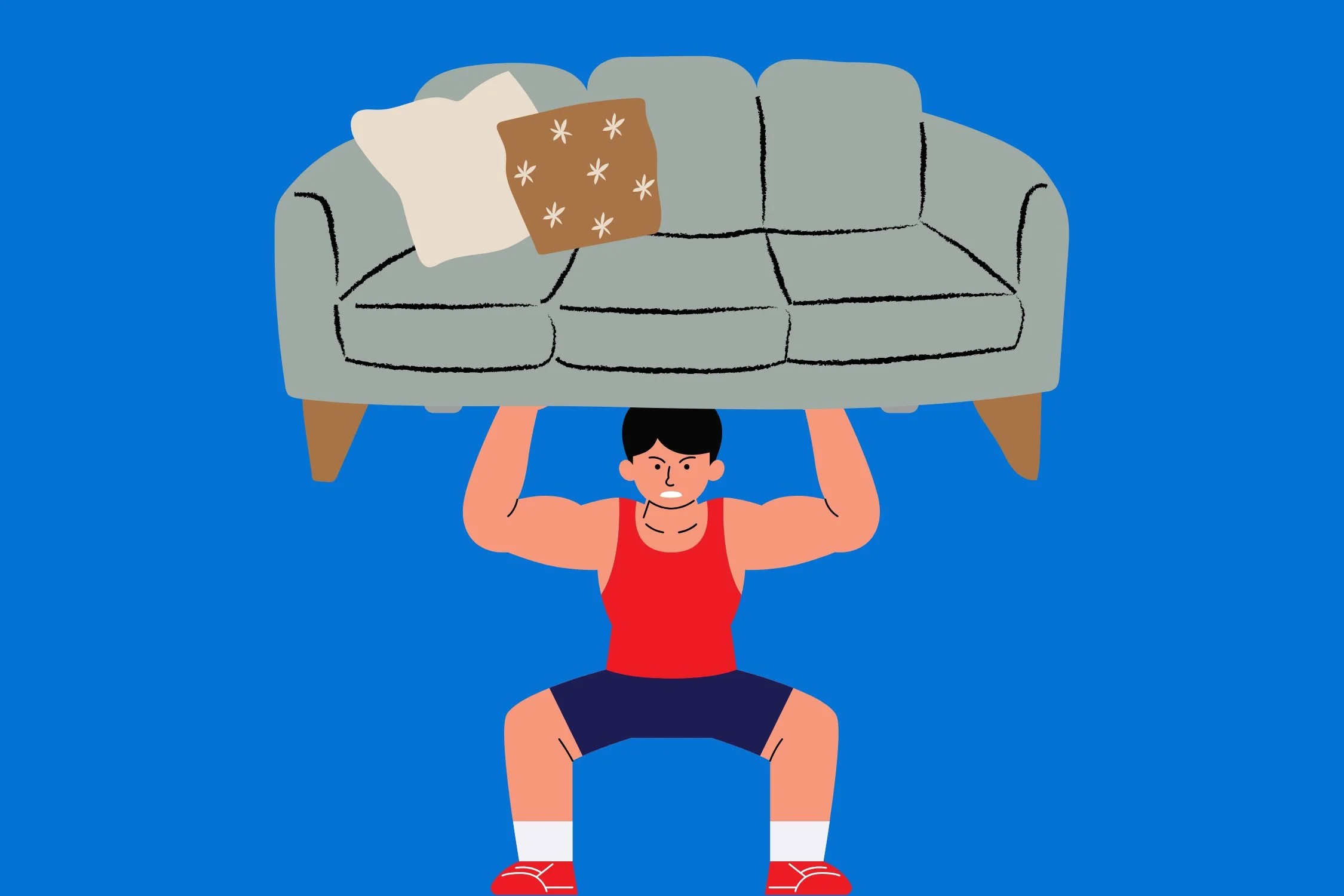How to Build Muscle at Home
Wondering if you can build muscle effectively without access to a gym? The answer is a resounding YES. Building muscle at home is entirely possible and highly effective, especially if you approach it the right way. Here’s how you can maximise your muscle growth from home, using simple equipment and the principles of progressive overload.
The Principle of Progressive Overload
Progressive overload is crucial for muscle growth. It means continually increasing the challenge to your muscles to stimulate growth. At home, you can achieve this by increasing reps, adjusting the difficulty of exercises, or ideally, by gradually adding weight. Without progressive overload, your muscles will plateau, and progress will stall.
Bodyweight Training: Pros and Cons
Bodyweight exercises, such as push-ups, squats, lunges, and sit-ups, are excellent starting points. They build foundational strength and muscle, especially for beginners. Advanced exercises, such as pistol squats and one-arm push-ups, will continue to challenge you as you progress.
Pros:
Free and convenient.
Great for beginners.
Effective for functional strength.
Cons:
Limited progression for intermediate and advanced trainees.
Harder to target some muscle groups effectively (especially back muscles).
High reps required at advanced levels may shift the focus to endurance rather than muscle size.
Why Dumbbells and a Bench Maximise Muscle Growth
While bodyweight exercises are effective, the most efficient way to maximise muscle growth at home is to use adjustable dumbbells and an adjustable bench. This simple combination allows you to perform the majority of the best exercises you could do in a fully equipped gym.
Advantages of Dumbbells and Bench:
Easily apply progressive overload by incrementally increasing weight.
Perform a variety of exercises targeting all major muscle groups.
Better isolation and targeting of specific muscles.
Minimal space required, offering excellent versatility.
Resistance Bands: Useful but Secondary
Resistance bands are valuable tools for adding variety and targeting muscles that are difficult to work with bodyweight alone, such as the back muscles. However, bands lack the consistent heavy resistance dumbbells provide, making them a useful supplement rather than your primary muscle-building tool.
What about Pull-Ups at Home?
You can, of course, target the back with body weight exercises, such as pull-ups, but most people can’t do many of these, if any at all. It’s not ideal to have these as the primary back exercise at home. Other options with body weight are using a broomstick between two chairs and doing inverted rows – something I saw a lot on social media when gyms closed due to covid – but this exercise is not the safest with two precariously unstable chairs and a broomstick that was designed to hold a brush head, not a whole person. Thus, acquiring some basic equipment, such as weights or bands, is usually the way forward.
Recommended Training Volume
To maximise muscle growth and recovery, consider the following guidelines:
Weekly Sets per Muscle Group:
Beginners: Aim for 10 sets per muscle group per week.
Intermediates: Approximately 15 sets per muscle group per week.
Advanced Lifters: 20 sets per muscle group per week, but avoid exceeding this significantly to prevent overtraining.
Sets per Muscle Group per Session:
Perform 4–8 sets per muscle group in a single session to optimise muscle stimulation without overloading recovery.
Training Frequency:
Distribute weekly sets across 2–5 training sessions per week for optimal results.
Top Exercises for Building Muscle at Home
Bodyweight Exercises:
Push-Ups: Chest, shoulders, triceps.
Pull-Ups/Chin-Ups: Back, biceps.
Squats and Lunges: Legs, glutes, core.
Dumbbell Exercises:
Dumbbell Chest Press: Chest, triceps.
Dumbbell Rows: Back, biceps.
Dumbbell Front Squats: Legs, glutes.
Shoulder Press: Shoulders, triceps.
Bicep Curls and Tricep Extensions: Arms.
Practical Tips to Maximise Home Muscle-Building:
Consistently increase your workout difficulty (weight or reps).
Train major muscle groups at least 2-3 times per week.
Ensure adequate protein intake and rest for recovery.
Keep workouts varied and balanced.
Conclusion
Building muscle doesn't require extensive equipment. You can start with bodyweight exercises, but then ideally progress by adding adjustable dumbbells and a bench for the best results. Remember, consistent progressive overload, proper nutrition, and sufficient rest are the keys to maximising your muscle gains at home. With the right approach, your home workouts can deliver impressive muscle growth.

